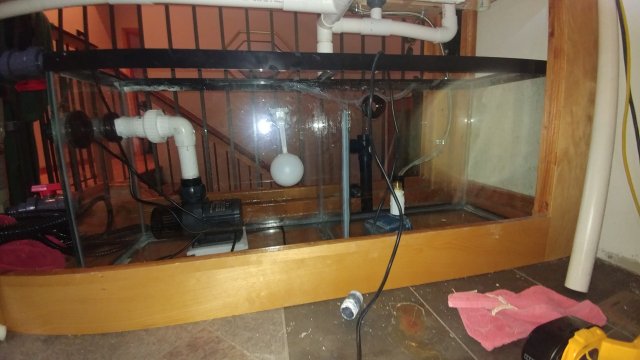I currently have a 360g with a 100g sump w/ overflow drainage.
should i auto drip water in the tank or sump?
which is better and why?
should i auto drip water in the tank or sump?
which is better and why?
By auto drip, do you mean an automatic drip water change system?
If so, dripping new water to the sump is probably best, because if you constantly drip to the tank, there is a chance (being lower than the tank )the sump will overflow.
If you drip to the sump, with a float valve, that stop valve, prevents the sump from over flowing.
If there is a safety overflow on the sump, or normal overflow to waste (eg to the yard,) it wouldn't matter either way.
On another front ......
I usually prefer to add water to the sump first, just in case the water provider over dosed chlorine, so the sump would have a chance to soften the blow of that dose, instead of that toxic slug hitting right to the fish full force. (organics matter in the sump would arguably neutralize a lot of a chlorine dose.
Temp changes might also be a consideration, or even seasonal water parameter fluctuations if your water provider source is riverine water.
If your water source is a stable personal well, these precautions may be moot.



